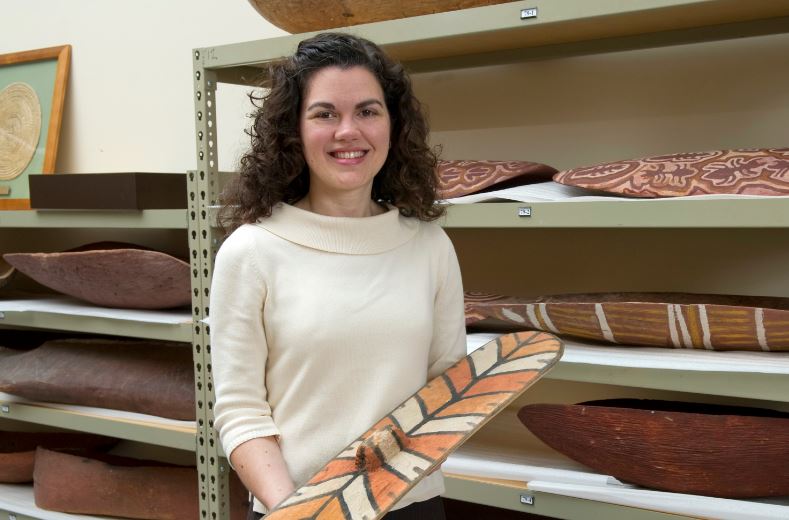
From the realm of crime scene forensics, ancient artefacts can now be more accurately traced back to their source using the novel approach of microbial DNA profiling.
For the first time, Flinders University researchers have shown how modern technologies to analyse the microbial DNA in geochemistry can more accurately lead back to the origins of a material.
The new approach provides a ‘proof of concept’ to confirm the provenance of Aboriginal Australian cultural items.
And from the ceremonial ochre, which travelled with the first human inhabitants across Australia, the technique has applications in other cultural histories and provenance of other materials used in ancient civilisations such as stone and clays.
“This technique has never been used in archaeology, a field which always asked ‘how can the origins of a material or artefact be identified?’ ’’ says Associate Professor Rachel Popelka-Filcoff, from Flinders University’s College of Science and Engineering.
Establishing the provenance of an archaeological object can provide information on that object’s movement from its original source due to migration or cultural exchange.
Associate Professor Popelka-Filcoff and her team have conducted microbial composition analyses using 16S rRNA sequencing on archaeological ochre samples to determine the geographic origins of Indigenous Australian cultural material.
Ochre is an iron oxide pigment naturally occurring in a range of red, brown, orange and yellow colours across Australia, and has featured in Indigenous art for thousands of years.
Aboriginal Australians have been using ochre and other natural mineral pigments to create rock art, body decoration and tool and weapon decoration since the earliest known human occupation of Australia.
Because of its cultural importance, Indigenous people travelled to various sites around the continent to mine ochre and also exchange this valuable material with other groups.
The researchers have used DNA profiling to confirm several ochre samples’ original source and to then consider the ancient route the material travelled.
The technique, is described in the paper ‘Microbial composition analyses by 16S rRNA sequencing: a proof of concept approach to provenance determination of archaeological ochre’ published in the leading science journal PLOS ONE.
Co-authors in the PLOS ONE paper are Professor Claire Lenehan and Dr Renee Smith, also from Flinders University, and Assistant Professor Shanan Tobe, from Arcadia University, USA.
The use of the microbial data and statistical analysis reveals that despite time and sample movement away from its origins, microbial information in a given soil or geological sample can be used as a ‘signature’ for the original source of the material,” says co-author Professor Claire Lenehan, also from the College of Science and Engineering at Flinders University.
“We think it is an exciting development in this long-term research and has established a proof of concept approach to a new method for archaeological provenance studies.”
Associate Professor Popelka-Filcoff, President of the Society for Archaeological Sciences, says the study provides the chance to reconstruct an important and fascinating part of Australian culture.
“This proof of concept study demonstrates the novel application of 16S rRNA sequencing analysis of microbial DNA towards identifying the provenance of archaeological samples, in this case Australian Indigenous ochre samples from four separate locations,” she says.
The South Australian Museum collections and collaborators at the National Museum of Australia supported the research project, along with research funding from the Australian Institute of Nuclear Science and Engineering.
Read more in The Conversation here
Dr Popelka-Filcoff was profiled in 2016’s The Investigator Transformed exhibition and book, a celebration of 50 years of Flinders University.

